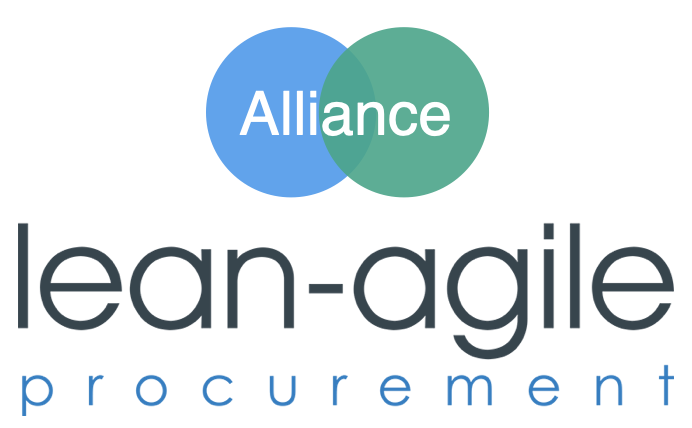What means Agile from a Procurement point view?
If you’d ask 10 agile coaches you’ll get 11 answers what agile means to them. You’d argue isn’t there one definition for it?-Sure there is, the „Agile Manifesto 2001“, but everybody does it’s interpretation slightly different. Inspired by the blog post „Building Agile Partnerships - Lean Agile Procurement“ by Simon Reindl, Certified LAP Trainer recently wrote about Lean-Agile Procurement I’d like to share what agile means to me from a procurement point of view. Therefor we’ll also refer to the agile manifesto.
Big thanks goes also to Philipp Engstler, Certified LAP Trainer & Board Member LAP Alliance who first came up with the idea of linking the Agile Manifesto to our work with Lean-Agile Procurement.
The Procurement’s Dilemma
Before we could dive into the topic agile we need to understand where procurement is up to today. We live in an exciting, rapidly developing world where it’s possible, for example, to print an aircraft engine within 72 hours (1). Commodity sourcing cases are increasingly digitized or taken over by machines. That leaves the complex, mostly strategic sourcing cases for which our existing tools such as Rfi, Rfp, Reverse Auction, etc. are inadequate (2).
In other words, we need new approaches to deliver added value to the business faster and so to stay relevant as procurement
What it means if procurement knows just one tool, e.g. a hammer every problem looks like a nail!-In other words classic sourcing approaches such as RfI/RfP are more than 120 years old and where thought to solve slightly different challenges. Don’t get me wrong, those are still valid for commodity sourcing cases. But if we try to apply these old receipts to source complex products/services or similar we run into the Procurement’s dilemma.
To cope with a lot of uncertainty in complex sourcing cases such as e.g. sourcing a new ERP we’d need to invest a lot of time and sweat in scope definition or specification. As we’re aware of the expensiveness of the sourcing approach we know that we’ll have just this one-time shot. This will lead to a „scope-explosion“ and this to a long contract periode for it’s delivery. With this huge investment in figuring out an as detailed specification as possible we accumulate incredible amount of risks and slow-down our time to market.
But what’s the alternative?-Lets imagine we’d be able to source within hours or days. We’d run the approach more often. However, this doesn’t come for free. We’d need to accept a reduced scope, usually specified in less details too e.g. goal-based. This would lead to an improved time-to-market and less risks and a shorter contract periode. With Lean-Agile Procurement we demand exactly that, as we accept uncertainty and upcoming changes with the first customer feedback.
Aligned to the Agile Manifesto
If we come back to the Agile Manifesto 2001, you’ll realize that Lean-Agile Procurement is completely aligned to it.
PS: There is an important note to understand the If Agile Manifesto (head-lines) if you’re newby: The first paragraph is always more important than the second, while we still need the 2nd paragraph.
Individuals and interactions over processes and tools
To overcome The Procurement’s Dilemma we need to start thinking out of our „silo“ or function and start collaboration with all stakeholders - especially the real users or customers - in the current process from the beginning. The lightweight nature of the Lean Procurement Canvas highlights having cross functional, empowered people engaged in the process from all parties. The canvas provides a structure for the right conversations to be held to achieve an agreement.
Working software product over comprehensive documentation
As with a lot of organisations that are using the manifesto to guide their work, the product has not to be software! The product is the alignment within internal stakeholders and an agreement with partner between organisations in order to solve a particular problem or build a particular product. Through that alignment starting with WHY, the vision, the business goals, etc. over to the WHAT, the customer needs to the HOW, potential solutions, etc. we ensure that we always focus to the RIGHT and most important things first. After the sourcing we always demand incremental delivery to ask for customer feedback as early as possible. This allows us to adapt at any time.
Customer collaboration over contract negotiation
This is the game changing aspect of this approach. The finished canvas is a contract, that has been built collaboratively! The emphasis of the workshop approach is to create a meaningful dialogue between all prospective partners and the company, who collaboratively shape the contract. In practice we co-create an agile contract with e.g. 3 vendors simultaneously in 1 room, so that we could decide right away and continue value delivery.
Responding to change over following a plan
Using this approach there is an opportunity to learn in an iterative, incremental and collaborative way. What may have taken weeks before is now reduced to days – with less space for misunderstanding. With such approach we dramatically decrease risks and stay as flexible as possible. Needless to mention that working like this needs a mind shift 180°!
Thanks to the agile Manifesto, which always was and still is a great inspiration we’ve created our Mission Statement for Lean-Agile Procurement in a similar „A instead of B“. We’re curious about your feedback about it?
OUR MISSION
Needs instead of Wants
Adaptive instead of Fixed
Partnership instead of Relationship
FUN instead of PAIN
Author
Sources
(1) Additive Manufacturing, GE 2016
(2) Survey/research about agile@procure- ment & sales, flowdays, Switzerland, 2018
